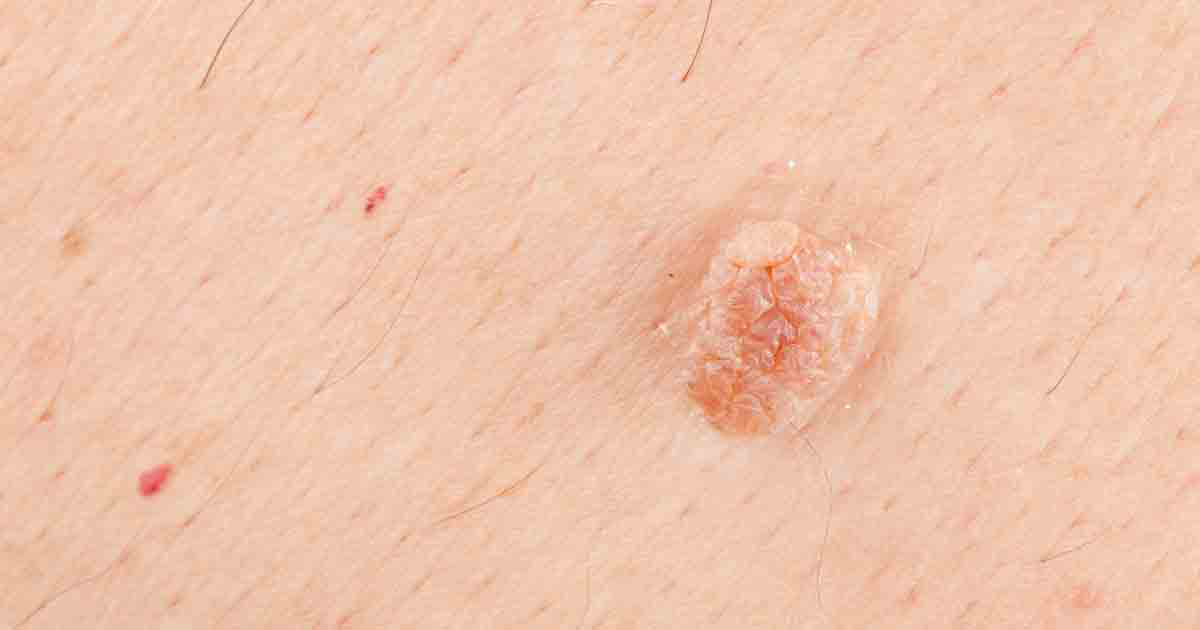Symptoms Of Squamous Cell Carcinoma
Squamous cell carcinoma is the second most common type of skin cancer and occurs when abnormal cells grow at an uncontrollable rate. Squamous cells are present in the skin's outermost layer, the epidermis. Squamous cell carcinoma often results from long-term, cumulative exposure to ultraviolet radiation from the sun or tanning beds. Individuals who live in areas that receive many days of sun throughout the year are most susceptible to developing squamous cell carcinoma, particularly if they spend a lot of time outdoors and do not use high-quality sunscreen. Squamous cell carcinoma can occur in any part of the body, but they most frequently affect the areas most exposed to the sun, like the lips, face, neck, hands, arms, and legs. There are many tell-tale symptoms of squamous cell carcinoma, and if you notice any of the following, be sure to seek out a dermatologist.
Flat Sore With Scaly Crust

Issues with the skin can sometimes be complex as, to the untrained eye, it may be difficult to tell the difference between a mole, an age spot, or something more concerning. Seeing a flat sore with scaly crust, though, should always be a cause for concern. This is, of course, if the sore is not due to a cut or minor injury. Open sores should always be monitored and inspected. In patients with squamous cell carcinoma, these sores often ooze and develop a scaly crust on the outsides. These sores often do not heal or, if they do, they come back after some time. Leaving these sores untreated greatly increases your risk of infection, which will only further complicate the problems associated with squamous cell carcinoma. If ever you find an open sore on your body, contact a physician immediately.
Continue reading to uncover more symptoms of squamous cell carcinoma to watch for.
Firm Red Nodule

Finding a firm, red nodule on the skin is the most common warning sign of skin cancer. As the harmful cells change and multiply, they can cause growths on the skin. This is particularly evident with growths and sores that do not heal or go away on their own, as sometimes unexpected but non-dangerous things can pop up on the skin. Firm red lumps can take many sizes and shapes, though they typically start off small and shiny. Over time, this lump grows and can even begin to bleed. You may develop a single lump or many, in a specific area or scattered around the body. These need to be inspected by a doctor immediately to catch the condition as early as possible.
Keep reading to learn about more potential symptoms of squamous cell carcinoma.
Scaly Patch On Lip

As stated before, this type of skin cancer usually affects the areas that experience the most exposure to the sun. While wearing a strong SPF lip balm or applying sunscreen directly to the lips is vital for health when you spend long periods outside, this area of the body is still highly susceptible to cell mutation and growths. Developing a scaly patch on a lip is another common sign squamous cell carcinoma is already underway. These patches differ from a common dry spot due to chapped lips. They present as more of a sore or lesion, as opposed to a crack or minor cut. Often, these patches can blister and bleed, in addition to developing a scaly crust. Monitor any new growths or developments on the lips, especially if you spend a lot of time outside.
Keep reading to learn about more symptoms now.
Rough Patch Inside Mouth

A rough patch inside the mouth can occur for many reasons. Biting your cheek while chewing or having a rough tooth, for example, can rip the tissue, which will eventually begin to scab. However, rough patches can also be indicative of squamous cell carcinoma. They may present as white or red, but this may be hard to observe. If you have a sore or patch in the mouth you can feel but not properly see, have a friend or doctor take a look to examine its characteristics. The patch may feel thick and nodular or like an erosion. The persistent nature will be the defining factor, as minor cuts and sores will naturally heal themselves and disappear in a week or two.
Continue to uncover more symptoms of squamous cell carcinoma now.
Wart-Like Sore On Private Area

Squamous cell carcinoma can also manifest itself in areas not typically exposed to the sun, such as the private area. Discovering a wart-like sore here could be a sign of a sexually-transmitted disease, but it can also be indicative of squamous cell carcinoma. Wart-like sores are raised and often painful. They can be hard or feel as though they might burst like a blister. Typically, they appear as red, raised sores and are fairly uncomfortable. If you ever find an abnormal growth on your private parts, seek medical attention as soon as possible.
